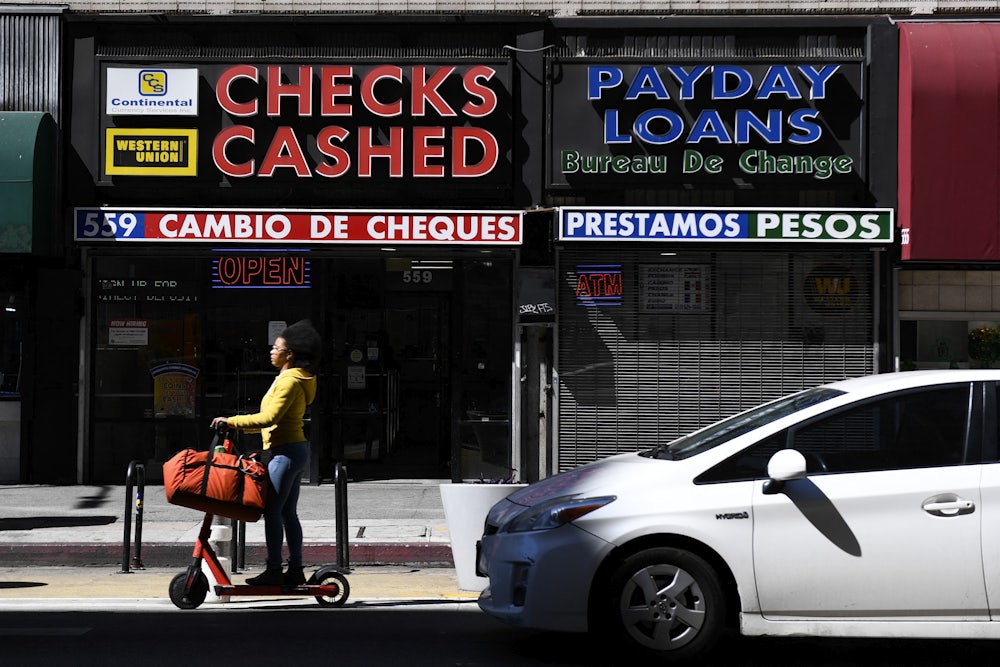The midterms are expected to be about inflation, and that’s a losing issue for Democrats. The consumer price index in March was up 8.5 percent over the previous year, and even though Republicans complain the CPI is a worthless inflation yardstick whenever it’s used to adjust Social Security benefits, they treat it as holy writ whenever they want to beat up a Democratic president for letting it get too high.
There isn’t much a president can do to curb inflation—that’s the Fed’s job—but according to a new Yahoo News/You Gov poll, a 39 percent plurality of Americans rank inflation as the nation’s single worst problem, well ahead of climate change (19 percent), health care (13 percent), or immigration (less than 10 percent). Also, a 31 percent plurality thinks Republicans are more able than Democrats (26 percent) to fix it.
That makes it perhaps an inauspicious moment to point out that wages are too low. But they are.
The good news, as I’ve noted before, is that wages have so little prospect right now of rising as high as they ought to that the Covid-driven inflation spike won’t likely last long (though it may long enough to give Republicans the House and Senate in 2023).
The bad news is that for all the talk you hear about a labor shortage, wage growth slowed to 1 percent in the last quarter of 2021, and though it picked up a bit in the first quarter of 2022, it may already be cooling.
Perhaps you don’t feel any richer today than you did a year ago. That’s probably because of inflation. Real average hourly earnings were down 2.7 percent in March compared to the year before and down 0.8 percent compared to February. Real average weekly earnings, a yardstick for workers a bit further up the income scale, fell even further: down 3.6 percent compared to the year before and 1.1 percent compared to February. Georgetown economist Harry Holzer reports that as recently as 2020, real wages grew 1.64 percent. By the middle of 2021, inflation was swallowing all wage gains and then some. The reason, again, is Covid-19, but Republicans are blaming President Joe Biden, who became president just a few months before real wage growth vanished.
Perhaps you think employers can’t afford to pay workers more because inflationary pressures are eating into their profits. Dream on. Corporate profits are so high right now that Josh Bivens of the Economic Policy Institute last week proposed a short-term windfall profits tax. From the start of the Covid pandemic to the end of 2021, corporate profits rose 53.9 percent, Bivens reported, while labor costs increased only 7.9 percent. By comparison, during the previous four decades, corporate profits averaged 11.4 percent and labor costs increased 61.8 percent. So now is hardly the time to break out the violin for corporate America.
/ In honor of Earth Day, TNR’s climate coverage is free to registered users until April 29. Start reading now.
The Covid trend is yet another illustration of capital’s dethronement of labor. If anything was going to boost labor’s share of corporate income, you’d think it would be a Covid-induced labor shortage. But it didn’t. From the start of the pandemic through 2021, labor’s share of corporate income actually fell. The same corporate executives complaining that you simply can’t get good help these days are paying that help a smaller share of company revenues.
One of the zanier features of the Covid economy is that although initially it drove wages up, that was mainly because it removed a lot of low-wage restaurant and hotel workers from the average. As these folks returned to work, wages in these sectors went up very fast, and that’s good. But overall wage growth leveled off because the average once again included a lot of people in lousy low-paying jobs.
In effect, we’ve seen a restoration of the Crap-Job Economy that displaced the economy of a generation earlier. As Daniel Alpert, Jeffrey Ferry, Robert C. Hockett, and Amir Khaleghi of Cornell Law School’s Job Quality Index project have noted, as recently as 1990 high-wage jobs accounted for 47.3 percent of all jobs and low-wage jobs (what I call “crap jobs”) accounted for 52.7 percent. Since then, high-wage jobs have fallen to 37 percent of all jobs created and crap jobs have risen to 63 percent. (In case you’re wondering, the definition of a high-wage versus a crap job is fairly simple: A high-wage job pays above the median weekly income, and a crap job pays below it.)
The Great Resignation, meanwhile, is rapidly turning into the Great Letdown, according to an April 25 “Managing Your Career” column in The Wall Street Journal. Citing a survey of 2,500 adults from The Muse, “a job-search and career-coaching company,” the Journal’s Kathryn Dill reported that nearly three-quarters of people who quit their jobs during the pandemic to take another one “said they felt surprise or regret.” Almost half said they intended to try to get their old job back, and more than 40 percent said if things didn’t get better in two to six months, they’d quit again. There is no balm in Gilead.
What all this adds up to is that when Republicans complain, as House Ways and Means Republicans did in March, that “Paychecks Can’t Keep Up With Bidenflation,” that’s less a comment on inflation (which, though high, is still well below the double-digit inflation of the 1970s) than it is on the anemic wage growth to which we’ve grown accustomed in an age of rising income inequality. As David Leonhardt of The New York Times—nobody’s idea of a Bolshevik—observed last year:
If anything, wages today are historically low. They have been growing slowly for decades for every income group other than the affluent. As a share of gross domestic product, worker compensation is lower than at any point in the second half of the 20th century. Corporate profits, on the other hand, have been rising rapidly and now make up a larger share of G.D.P. than in previous decades.
Yes, inflation is too high. But wages are still too low.








